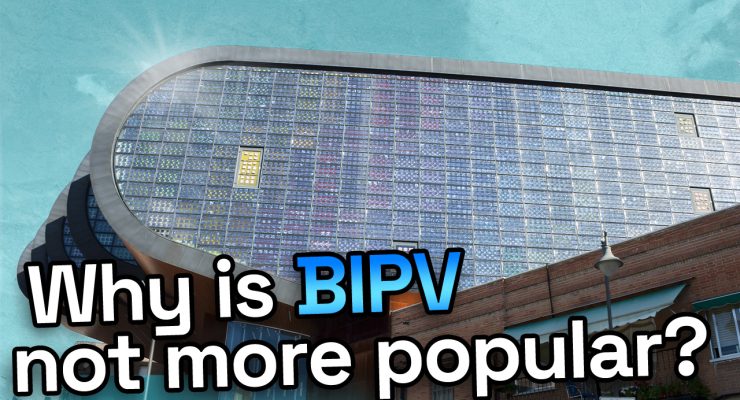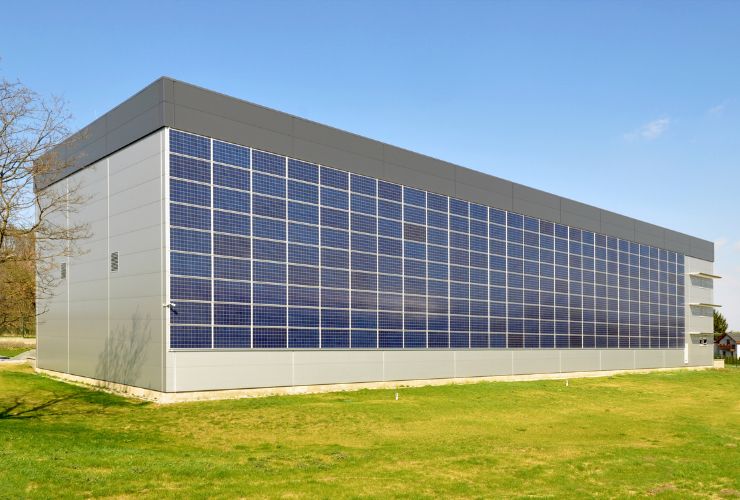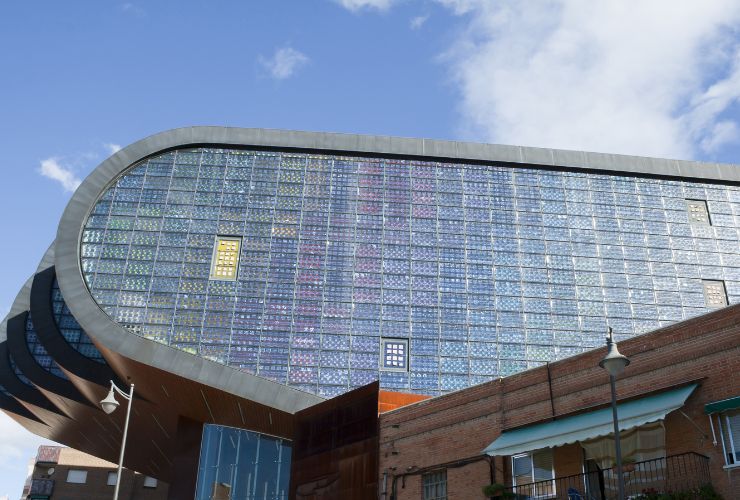
Fast read
Building-integrated photovoltaics (BIPV) is a technology that integrates solar cells into building materials, such as windows and roofs. This has the potential to generate electricity while also providing aesthetic and structural benefits.
BIPV has challenges such as lower efficiency, limited suitability for all orientations, higher costs, technical issues, and lack of government support. These challenges are hindering the popularity of BIPV.
Despite these challenges, there is growing interest in PV technology. As the cost of BIPV systems decreases in future years and the technology becomes more mature, BIPV will likely become more widely adopted.
Why do we not see more windows, house walls and high rises with solar panels built into them?
I’m often asked why windows do not have solar cells. Why the side of buildings, particularly glass-covered skyscrapers and towers, do not act as a solar PV generator? It would make sense that all the surfaces could generate electricity to power the buildings. Solar cells are made and integrated into the glass for use within windows, walls, etc. This technology is known as Building Integrated Photovoltaic (BIPV).
However, companies offering this technology have not taken off for several reasons.
Low efficiency means reduced PV output
Because the solar cells and surface are see-through, there is less space for regular cells to be placed. If a different technology is used, this is usually a lower-performing technology, e.g thin film solar panels.
Thin film solar technology has lower efficiency and therefore reduces the potential output. Therefore such windows, for example, have reduced performance compared to standard solar modules.

Not an ideal angle and direction to the sun
Solar panels work best when angled so that the surface directly faces the sun. As windows are vertical, they will not work efficiently as the sun will not be at an angle that maximises power generation.
Additionally, many buildings are not oriented to maximise solar performance. Only 1 or 2 sides of the building would be most suitable, as shade will be a significant issue. New technologies, such as Enphase-like microinverters, are hoped to improve this situation in future years.
Retrofitting will cost a fortune
While gaining much sunlight, many existing high-rises and homes do not have building-integrated photovoltaic technology added. Retrofit windows and facades and integrating the generated solar into the building’s electricity infrastructure will be expensive. Most likely, it is not economically viable. On the other hand, the Government could mandate that all new high-rise buildings include some aspects of the Building Integrated Photovoltaic technology.
New home builders could be compelled to design and construct a solar-friendly roof and dedicate the north-facing wall to some solar technology. We predict that in future years, such policies will be considered by the Governments of the time.
Building Integrated Photovoltaic has higher costs
As the materials and technologies are currently not produced in sufficient mass, the cost of their components is also high. So such systems, because of position restriction, produce less solar than conventional PV but are quite a bit more expensive, putting pressure on the economic viability.
Considerable technical challenges
Another problem preventing the widespread adoption of solar-integrated building materials is technical challenges. To withstand handling during construction and daily use, the integrated windows or panels must be robust and weatherproof.
Design and manufacturing processes need to improve to meet requirements and still produce energy efficiently. Furthermore, it cannot be easy to incorporate solar panels into older buildings that weren’t designed with solar integration in mind. Such constructions may need extensive structural and electrical system changes to retrofit solar panels and batteries. Such additional work would increase the cost and complexity of the project.
Standard solar panels for homes, businesses and solar farms are already highly efficient. The solar industry is growing and offers many opportunities for conventional installations. Adding solar panels to glass and building panels on rooftops is not cost-effective at the moment. As such, the retrofitting of Building Integrated Photovoltaic will unlikely gain penetration in the market for some time.
The technology is expensive because it’s made in small quantities, and it’s only used in small quantities because it’s expensive. A bit like a catch-22 situation.

Advances on the way for Building Integrated Photovoltaic are happening
Despite these obstacles, the development of Building Integrated Photovoltaic materials has advanced. The effectiveness, robustness, and attractiveness of PV modules created expressly for integration into building surfaces are the subject of numerous worldwide research initiatives.
New solutions like transparent solar cells or PV windows are being developed to address energy generation and aesthetics.
Additionally, solar integration is becoming more economical because of the falling price of solar technology and cells. Increased efficiencies and ongoing improvements in PV manufacturing techniques also help.
The obstacles to overcome for Building Integrated Photovoltaic
Problems like cost, efficiency, looks, technical issues, and rules have stopped solar windows, walls, and skyscrapers from being used a lot. But things might change in the future.
Ongoing research and development initiatives are tackling these issues. We anticipate a rise in the use of solar-integrated buildings as technology improves. Future cost reductions and supportive policies are also in the pipeline. This will help create a more sustainable and energy-efficient future.
Solar building materials are expected to become cheaper as more people want renewable energy and production becomes more efficient. So in 20 or 30 years, new buildings will most likely have to have building integrated solar as part of the infrastructure. Building Integrated Photovoltaic could be as common as a lift or a balcony, and the new generation of energy users will wonder why we did not do it on a large scale earlier.


